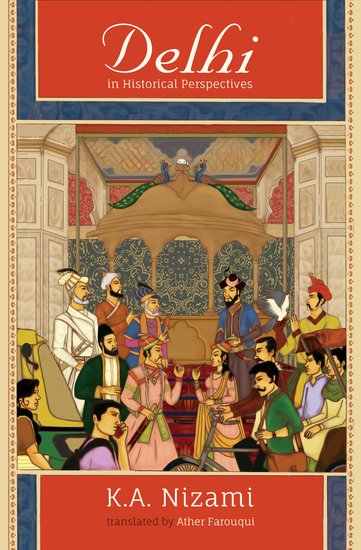The fascinating and chequered history of Delhi through the centuries has been a popular subject among authors. Translated by Ather Farouqui, Delhi in Historical Perspectives is a compilation of historian K.A. Nizami’s lectures delivered at the University of Delhi and the Ghalib Institute in Delhi, first published in Urdu in 1972.
He presents his accounts of the periods of the Delhi Sultanate, the Mughals, and the poet Ghalib through the analyses of wide-ranging sources: original literary, travel, biographical, hagiographical, and administrative accounts in Persian, Hindavi, and Urdu.
The following is an excerpt from the chapter “Delhi under the Mughals” of the book.

Elegies to Delhi written soon after 1857 do not mourn so much the eclipse of the Mughal Empire as they do the decimation of the civilizational ethos of the time. Until 1857, Mughal Delhi, despite the waning of Mughal might, was able to retain its basic cultural fabric. The Lal Qila stood outwardly the same as it was in the time of Shahjehan. Yet its old magnificence and grandeur had faded away. Hallowed spots where not a winged creature could venture were now repositories of the droppings of pigeons and bats. The emperor lived on doles from the East India Company (hereafter the Company), and for a mere pittance of an increase in his pension he had to submit application after application to the resident. Most of the royal princes, known as sultans, faced starvation, so much so that by the time of Akbar Shah II, these princes would climb on their rooftops crying out: ‘We are dying of hunger.’ Sauda paints a pathetic picture of their plight and humiliation:
مچا رکھی ہے سلاطینوں نے یہ توبہ دھاڑ
کوئی تو گھر سے نکل آئے ہیں گریباں پھاڑ
کوئی در اپنے پہ آ، دے دے مارتا ہے کواڑ
کوئی کہے، جو ہم ایسے ہی چھاتی کے ہیں پہاڑ
The sultans are raising a furore about their woes,
Some storm out of their abodes with lapels torn.
While others bang and break down their doors,
Still others cry, ‘If on your chests we are burdens
Then better administer us poisoned potions.’
In fact, the sultans were not even allowed to stir out of their houses and look for jobs. After managing to escape from the fort, Azfari described in his memoirs the strict restraints placed on them, with watchmen as well as watchwomen having been posted to keep their movements under surveillance. ‘The begum in charge of the palace deputed women to visit the houses of the sultans. In whatever condition we would be in, they would come many times during the day and night to check on us with their own eyes and give their reports to the begum.’
[…]
The events of 1857 upset this rhythm. The fort turned into a prison, Chandni Chowk and Khanam Bazaar lay barren, Jama Masjid was padlocked, Masjid Akbarabadi was razed to the ground, and the khaneqahs turned into ruins while madrasas became agricultural fi elds. Prominent families faced destruction and their members found it diffi cult to keep their honour intact. People were left with no choice but to start moving out of the city. Lights went out at the khaneqah of Shah Ghulam Ali and Madrasa Rahimia wound up. Ghalib wrote of this:
A large deserted expanse from Jama Masjid to Rajghat sprawls, and if the heaps of bricks are cleared what would be left is an empty void. … From the Kabuli Darwaza to the Kalkata Darwaza lies an open fi eld … no trace of many famous havelis, mansions, Punjabi Katra, Dhobiwada, Ramji Ganj, Katra Saadat Khan, Haveli Jernail, houses of Ramjidas, Saheb Rambagh. By God! Delhi is no more a city but an army camp, or a cantonment. … No fort, no bazaar, no city.
This was not just the end of an empire but of an entire civilization where the exalted values of Indian culture had been nurtured. Those witnessing the devastation cried out in distress:
تذکره دلیِ مرحوم کا اے دوست نہ چھیڑ
نہ سُنا جائے گا ہم سے یہ فسانہ ہرگز
O friend, mention the tale of the deceased Delhi,
I don’t have the heart to hear this sorry tale.




